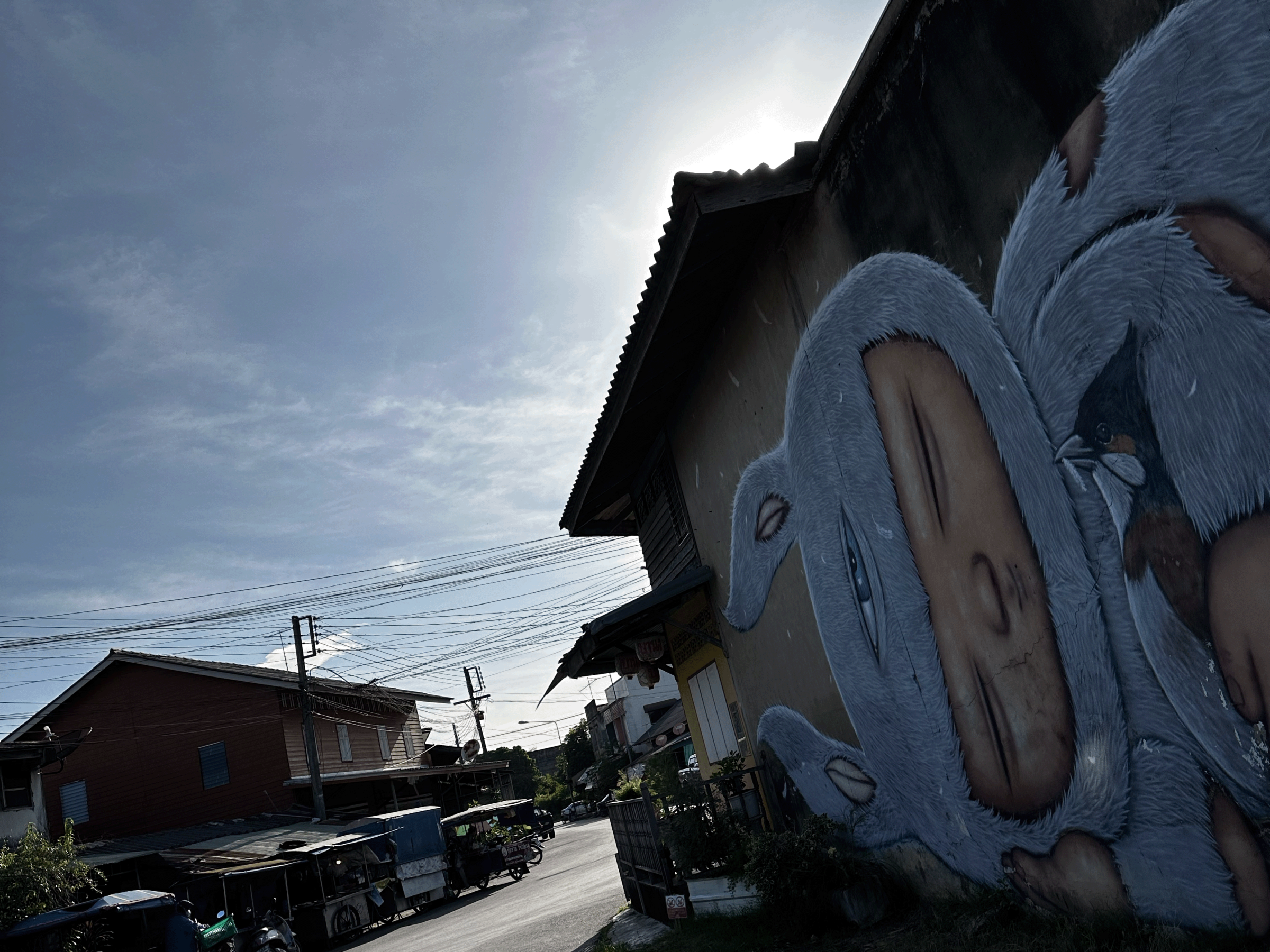Roaring down the open road on a motorcycle, feeling the wind on your neck and the sun on your helmet, is unlike anything else. But riding a motorcycle from Singapore to Thailand takes the adventure to the next level. From the bustling streets of Singapore to the lush fields and pristine beaches of Thailand, the journey promises memories for a lifetime – especially for those used to weekend rides across our one-and-only land-connected neighbour, Malaysia.
First off – credit where it’s due. In an age where attention spans barely survive the first sentence, and curiosity is often swiped upwards before it even has time to take root, the fact that you’re still reading an actual blog – yes, words on a page! – is something to celebrate. You’re clearly not just a casual scroller; you’re genuinely curious, possibly planning, and definitely built for more than algorithms and 15-second reels. That already makes you part of a rare breed.
But before you hit the ignition, proper prep is key to ensuring a safe, smooth, and joy-filled ride.
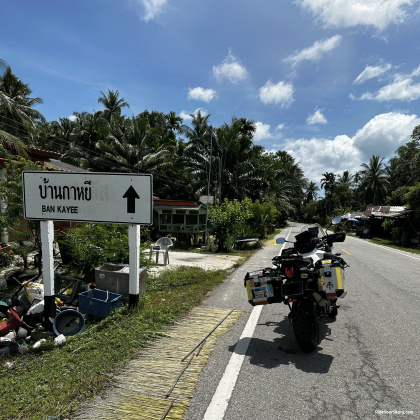
SECTION 1: MUST-HAVE DOCUMENTS
- Passport with at least six months’ validity
- As with any international travel – this one’s a no-brainer.
- Visa Requirements
- Not required for Singapore citizens. Permanent Residents should carry their NRIC for routine checks at the checkpoint.
- Singapore Passport holders may enter Thailand visa-free for up to 60 days under the Tourist Visa Exemption Scheme (TVES). As of 1st May 2025, travellers required to apply for Thailand Digital Arrival Card (TDAC) online [https://tdac.immigration.go.th/arrival-card/] before arrival. For long-term visas, apply via the Royal Thai Embassy in Singapore [https://www.thaiembassy.sg]. (Psst: Keep this in mind if you’re crossing into Laos or Cambodia too.)
- Motorcycle Registration Documents
- Print multiple copies (from onemotoring.com → Digital Service/Enquirer My Vehicle Details), and keep them in a Ziplock bag. You’ll need them for Thai border crossing and insurance. And possibly at random checkpoints in Malaysia.
- If the motorcycle isn’t registered under your name, bring printed vehicle details and a signed authorisation letter from the owner.
- Insurance for You and the Bike
- If you’re riding without insurance, you probably shouldn’t be riding at all.
- Singapore’s mandatory insurance only covers up to 80km into Thailand from Malaysia border – typically reaching provinces like Satun, Songkhla, Pattani, Yala, and Narathiwat (based on Google Maps). However, the policy does not clarify how the 80 km range is measured – whether by road distance or as-the-crow-flies – and it does not specify the names of the covered provinces. This lack of detail introduces uncertainty during claims, likely due to intentional ambiguity that allows insurers discretionary interpretation during assessment. Beyond that range? You’re riding at your own risk.
- The insurance sold at the Thai border only covers third-party liability. It doesn’t protect you or your bike. A separate travel insurance plan for yourself is highly recommended. So anything beyond that zone? You’re rolling at your own risk.
- International Driving Permit (IDP)
- Not required for Singapore license holders within ASEAN countries and reciprocally as per Agreement on the Recognition of Domestic Driving Licenses Issued by ASEAN Countries.
- Carnet de Passage en Douane (CPD)
- Not needed for Singapore-registered vehicles unless you’re venturing into India and some other South Asia countries beyond ASEAN borders.
- Foreign Vehicle Permit (FVP)
- A convenient perk for overland travelers from Singapore and Malaysia – the FVP can be applied for on the spot at the border with minimal fees. You’ll need the required documents listed above to apply. Do note that the FVP is typically valid for a single entry and up to 30 days, even if your travel visa allows a 60-day stay. Be sure to inform the customs officer if you plan to stay in Thailand longer, as special arrangements may be needed. You must return the FVP when exiting Thailand. If you re-enter from Laos or Cambodia, you’ll need to reapply for a new permit.
- You’ll be issued and required to sign two copies of the Foreign Vehicle Permit (FVP): one to be submitted upon entry at the border, and the other to be returned upon exit. You’ll also receive an Information of Conveyance (TM2) form for your records and will be required to purchase third-party insurance.
- Insurance for Motor Vehicle Accident Victims (Thailand)
- The insurance I purchased at the Sungai Golok border was priced according to motorcycle engine displacement. The rates. even with added commission, are officially stated and remain reasonable. Payment is made in Malaysian Ringgit, and the minimum duration available for purchase is three months. If you’re planning a return trip, it may be worth considering a one-year policy for added convenience.
- This compulsory motor insurance primarily covers third-party victims involved in an accident. It also provides limited compensation for the driver of the insured vehicle, including medical expenses and cases of death or disability, but does not cover damage to your motorcycle or broader personal claims.
- The insurance is issued by RVP (Road Accident Victims Protection Company Limited). For more information, you may refer to their official Claims FAQ page. Please note that this link is for informational purposes only, and it is the reader’s responsibility to review the specific terms and coverage of the insurance policy they purchase.
- You should purchase separate travel insurance for yourself. Ensure (wink!) that the policy explicitly includes coverage for road travel involving the operation of a personally owned or registered motor vehicle (not rental or hired and specifically including motorcycles, not limited to passenger cars), and extends to activities classified as higher-risk or potentially hazardous, as defined within the policy’s terms and conditions. (Good luck finding that in the fine print – if you do, please let me know which insurance company offers it!)
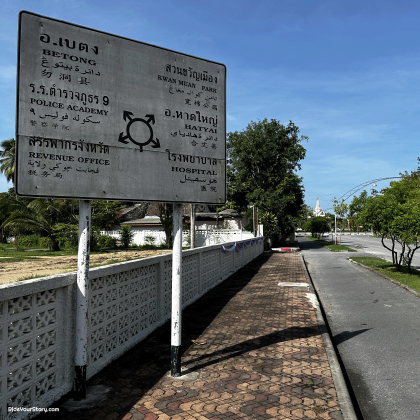
SECTION 2: ROUTE PLANNING
- Research your planned route thoroughly, along with alternative options in case of road closures, bad weather, or unexpected detours. Use tools like Google Maps or OpenStreetMap to examine road conditions, traffic history, terrain, and even local user contributions that can offer valuable, real-time insights into the areas you’ll be riding through.
- Ensure you have offline maps readily available by downloading navigation tools such as Maps.me or Google Maps in advance.
- I’m still rocking my old Garmin Zumo for the planned route, plus a budget Android phone for detours and locating amenities. If you’re into Apple CarPlay, go for it – if not, your phone will do.
- Check road conditions and traffic laws in each country.
- Stay informed about current border crossing procedures and the local political climate, as sudden changes or unrest can lead to unexpected closures. The last thing you want is to find yourself stranded due to a sudden border closure triggered by political tensions or another pandemic.
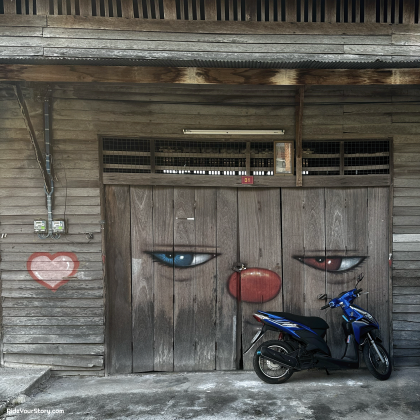
SECTION 3: GEAR CHECKLIST
- Basic Tools & Maintenance Gear
Unless you’re riding an old-school mechanical beast, modern bikes are loaded with electronics – so leave major repairs to the pros. Even if you’re not a mechanics, carrying basic tools can make you a road-trip hero – or at least help you flag on down.- OEM Toolkit (great for tightening mirrors, windshields, etc.)
- Tyre repair kit (For tube or tubeless)
- Tyre inflator (Not all petrol stations in Thailand have air pumps, especially in the outskirts or rural areas – necessary for those who prefer exploring off the mai roads like me)
- Zip ties & duct tape (your best friends in the middle of nowhere)
- Superglue (somehow it is useful, tire or valve hairline crack for example)
- Riding Gear
- Helmet – A must. No debate.
- Jacket, gloves (plus a spare), pants, boots – buy the best gear you can afford. This isn’t about looking cool; in our climate, you’ll be roasting wearing them. The only time this gear truly matters is when you slide across the asphalt. Your gear is your only protection against lacerations, road rash, and broken bones. Do the math: skin grafts and bone alignment operations are far costlier than your gear combined. The point is, we wear it hoping we never need to use it.
- Always remember: ATGATT (All The Gear, All The Time). If you’re ever in a riding group or at an event where they want you to ditch your riding jacket for those custom designed, flashy long-sleeve t-shirt just to fit in, or require you to ride in close formation forgoing the two-second rule so cars won’t cut into “your lane“. It’s time to considering leaving the herd and find your calling in solitude. That brand-inflated or club-afflicted ego won’t save you from poor judgment especially when you go under a truck tire.
- Sets of riding socks (with talcum powder to keep your feet dry), and bandanas to help protect your neck from the sun.
- Sunglasses are a must if your helmet doesn’t have a retractable sun visor – though I find the built-in visor much more convenient and less cumbersome. You don’t need a Ray-Ban for riding; the Mountain Biking Sunglasses Rockrider ST 100 from Decathlon work best, and I even carry two – a spare – because it’s easy to lose them on a long trip!
- Ear Plugs: A frequently forgotten but essential piece of gear for protecting your hearing from prolonged exposure to loud wind and engine noise. For hygiene, especially on extended trips, disposable earplugs are recommended.
- Rain & Cold Weather Gear
- Rainproof wrap-over gear is perfect during the monsoon. Even without a raincoat. your gear dries fast – except for your boots – rainwater always finds its way in. If you’re heading to highlands (northern Thailand or Laos), pack something warm.
- Rain cover for your bike – not so much to guard against prying eyes, as Thailand is generally safe. But if you’re staying in rural areas, it’s the curious monkeys you need to watch out for – especially the mischievous macaques. A cover helps keep them from climbing on or fiddling with parts of your motorcycle (yes, they love mirrors and switches)
- Power & Charging
- We live in a digital age where staying connected is essential – so don’t forget your power bank. It can be a lifesaver when you’re on the road with no socket in sight, or risk going off-grid unintentionally.
- First Aid Kit & Medications
- Basic first aid, bandages, disinfectant, and any prescription meds.
- Camping Gear (Optional)
- My camping days are over – I’d rather not wake up soggy or serve as a buffet for mosquitoes. Camping is for overgrown Boy Scouts trying to relive their Army days. Unless you’re headed to the Himalayas, leave the tent behind. There’s always a clean hotel with a working toilet and zero leeches. Anywhere below 2,500 meters above sea level? No thanks. And don’t even get me started on the campfire jokes in our climate.
Always remember: ATGATT (All The Gear, All The Time). If you’re ever in a riding group or at an event where they want you to ditch your riding jacket for those custom designed, flashy long-sleeve t-shirt just to fit in, or require you to ride in close formation forgoing the two-second rule so cars won’t cut into “your lane“. It’s time to considering leaving the herd and find your calling in solitude. That brand-inflated or club-afflicted ego won’t save you from poor judgment especially when you go under a truck tire.
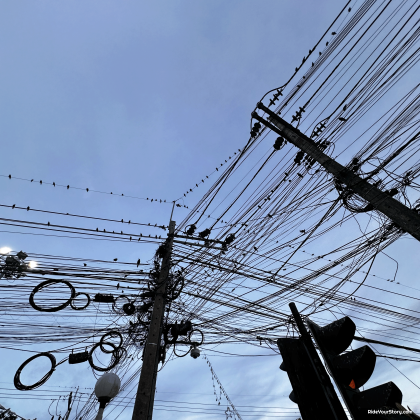
SECTION 4: SAFETY & HEALTH
- Travel Vaccinations – Visit your travel clinic and carry your record just in case.
- Travel Insurance – Email a copy to your family, loved ones or guardian.
- Ziploc all your important docs – Passport, insurance, bike papers, etc.
- AirTag your bike and valuables – And enable Crash Detection if your iPhone supports it.
- Tell someone your route – It matters more than you think. Share live location through your phone, AirTag or any tracking devices.
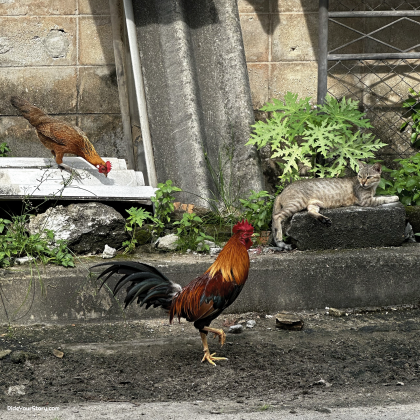
Section 5: PERSONAL WEAR
This section is a personal choice. I’m not an influencer who fills the entire frame and blocks the beautiful scenery behind me, so I don’t need a makeup kit or high heels for a bike trip – just a fuss-free packing list:
- What I wear – because style takes a backseat to comfort and saddle time.
- AIRsm innerwear from Uniqlo – perfect under the riding jacket. Rolls up to the size of a bun, easy to wash in a sink, dries fast on a balcony, over an AC compressor, or just strapped in a mesh bag flapping on your pannier.
- Casual T-Shirt, Cargo shorts/Bermuda, Teva sandals – for blending in with the locals and chilling post-ride, because after hours in a helmet and boots, you’ve earned some breathable diginity.
- Sleeping bag – Not for camping, but as a barrier between me and mysterious hotel bedding. It’s part of my anti-bedbug ritual, perfected during rides through India – and the first thing that goes into the washing machine the moment I get home.
- Toiletries? Just grab what you need from 7-Eleven in Thailand. They’ve mastered mini sizes.
- Anything else I bring is either boring… or better left unlisted
- Oh!.. your Ray-Ban.
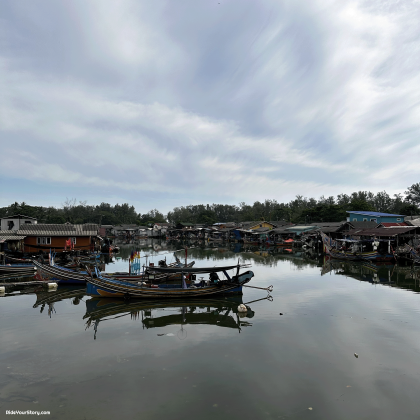
FINAL NOTES
With a bit of planning and a lot of throttle, your overland motorcycle trip from Singapore to Thailand can be one of the most exhilarating chapters of your life. You’ll ride through vibrant cities, sleepy towns, twisty mountain roads, and stretches of sun-drenched coastline – with every kilometre offering something new to experience, photograph, or laugh about later.
Whether you’re chasing sunsets on empty highways, sipping tea with locals in roadside stalls, or just soaking in the freedom that only two wheels can offer—you’re in for a ride that’ll stick with you long after the dust settles.
And oh, don’t forget to return your Foreign Vehicle Permit (FVP) to Thai customs when exiting the country. Failure to do so could result in a cumulative daily fine on your next entry. It’s an easy step to overlook after an epic ride – but trust me, the fine isn’t nearly as fun as the adventure.
Remember : Stay safe – Stay flexible – Enjoy the ride – Ride smart – Ride your own story!
